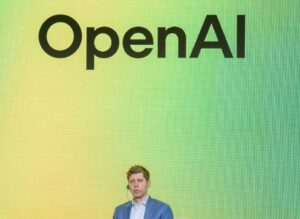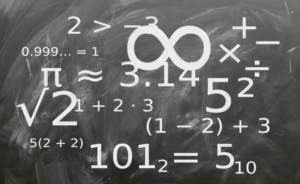OpenAI Unveils GPT-4.1 Models, Raising Concerns for Grok

OpenAI’s Groundbreaking Release of GPT Models
OpenAI has recently transformed the artificial intelligence landscape with the launch of three remarkable models: GPT-4.1, GPT-4.1 Mini, and GPT-4.1 Nano. These updates significantly enhance the capabilities compared to the previous version, GPT-4o, effectively raising the bar for AI functionality. The competition has intensified, especially for Elon Musk’s Grok, which now faces greater challenges.
Enhancements in GPT-4.1
Performance Improvements
At the forefront of this release is GPT-4.1, setting new benchmarks in several crucial areas, including coding, long-context comprehension, and instruction adherence. On the SWE-bench Verified, which assesses real-world software development skills, GPT-4.1 scores an impressive 54.6%. This score surpasses that of both GPT-4o and the nearly-released GPT-4.5, making it an invaluable tool for developers needing precise fixes or edits within extensive codebases.
Efficiency and Scalability
One of the most appealing aspects of the new models is their cost-effectiveness and efficiency. GPT-4.1 Mini reduces latency by nearly half compared to its predecessor while also decreasing operational costs by 83%. For even swifter responses, the GPT-4.1 Nano model excels, especially in classifying and auto-completion tasks. These advancements pose significant concerns for Musk’s xAI, which trails behind in key performance indicators.
Instruction Following and Context Management
Improved Instruction Adherence
In terms of instruction following, GPT-4.1 excels, resulting in fewer miscommunications and more precise outputs. Users can expect tighter formatting and superior handling of complex multi-step instructions. For instance, it can generate structured files like YAML configurations accurately, a feat Grok has struggled to achieve due to its more informal and often unpredictable responses.
Contextual Understanding
Perhaps the most impressive feature of the GPT-4.1 models is their ability to manage vast contexts. They can now process up to a staggering one million tokens of input, akin to analyzing several complete books simultaneously. This capability allows GPT-4.1 to retain critical details throughout large documents, understand interconnected information, and accurately extract relevant data without losing coherence. Internal tests at OpenAI reveal that the model can effectively conduct difficult retrieval tasks, often likened to finding a "needle in a haystack."
Advancements in Visual Understanding
Enhanced Image Interpretation
On the visual analytics front, GPT-4.1 Mini demonstrates superior performance in image interpretation tasks compared to the earlier GPT-4o. It excels in understanding complex visuals like charts, graphs, and scientific imagery—an area where Grok currently lags behind. For Musk’s xAI to remain competitive, strategic shifts may be necessary to improve its capabilities in this domain.
Competitive Pricing
One notable feature of the latest models is their competitive pricing. OpenAI has strategically reduced costs while boosting performance, making GPT-4.1 more affordable for everyday applications compared to GPT-4o. Additionally, prompt caching discounts can reach up to a remarkable 75%, allowing developers to maximize output without significantly increasing expenditures. This pricing strategy presents a strong incentive for developers to switch to the new models and further complicates the landscape for xAI.
As these advancements unfold, the implications of OpenAI’s latest release extend beyond just making GPT-4o feel outdated; they put Grok’s competitive edge in jeopardy. Musk, known for his innovative ventures like SpaceX, may need to ramp up efforts within xAI if he aims to keep pace with these ground-breaking developments in artificial intelligence.






